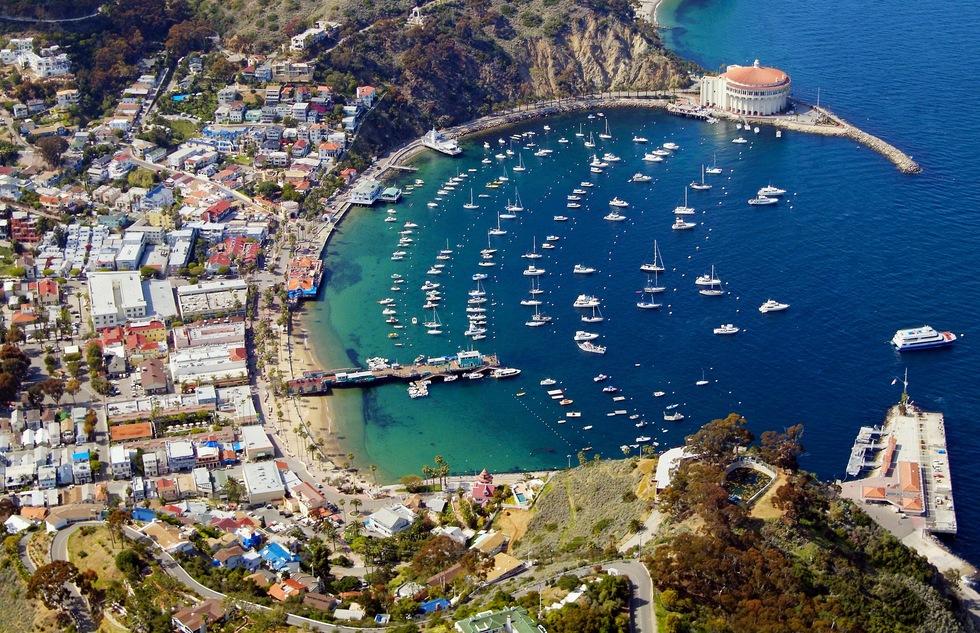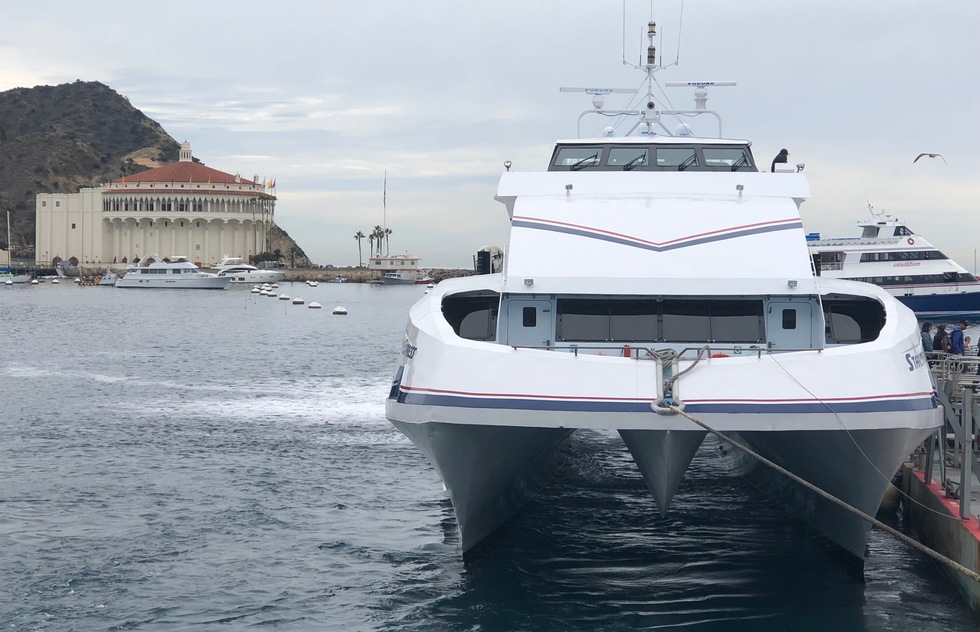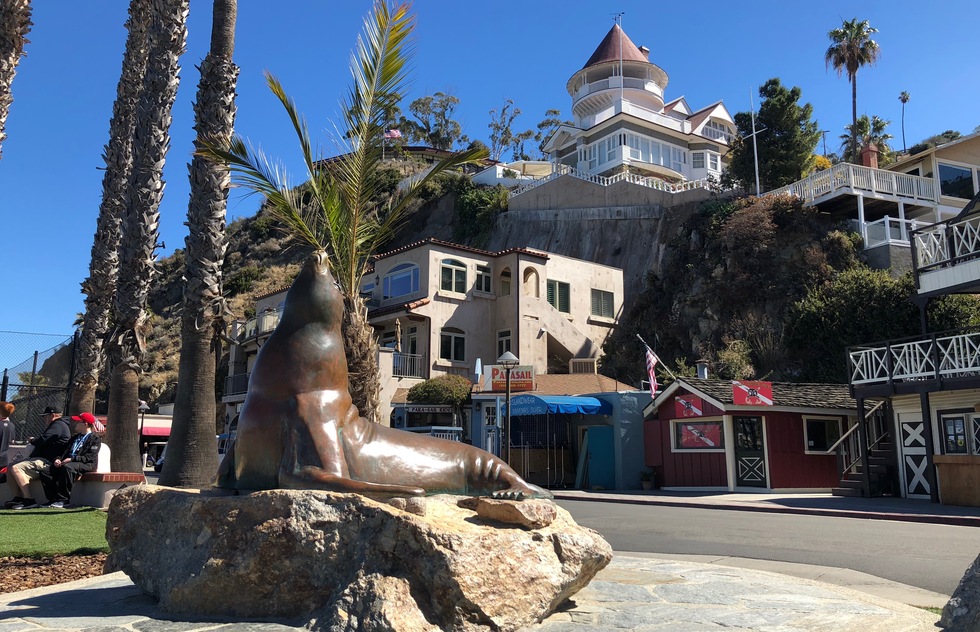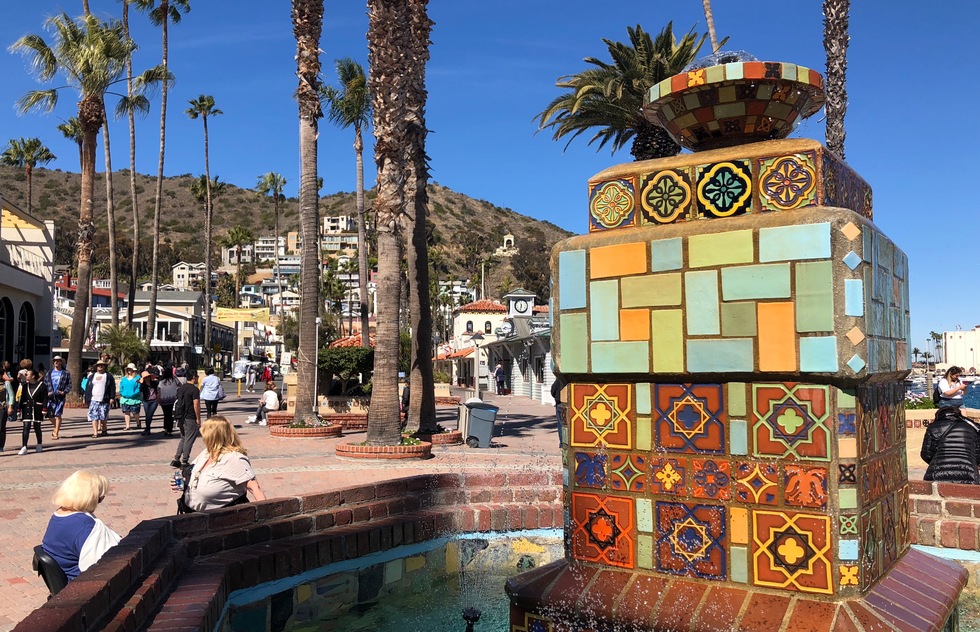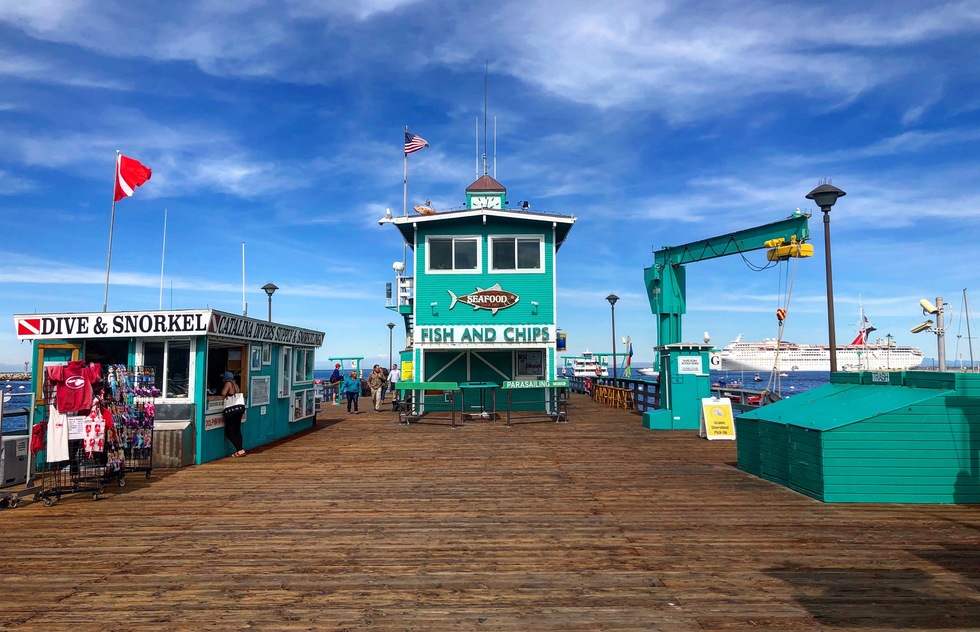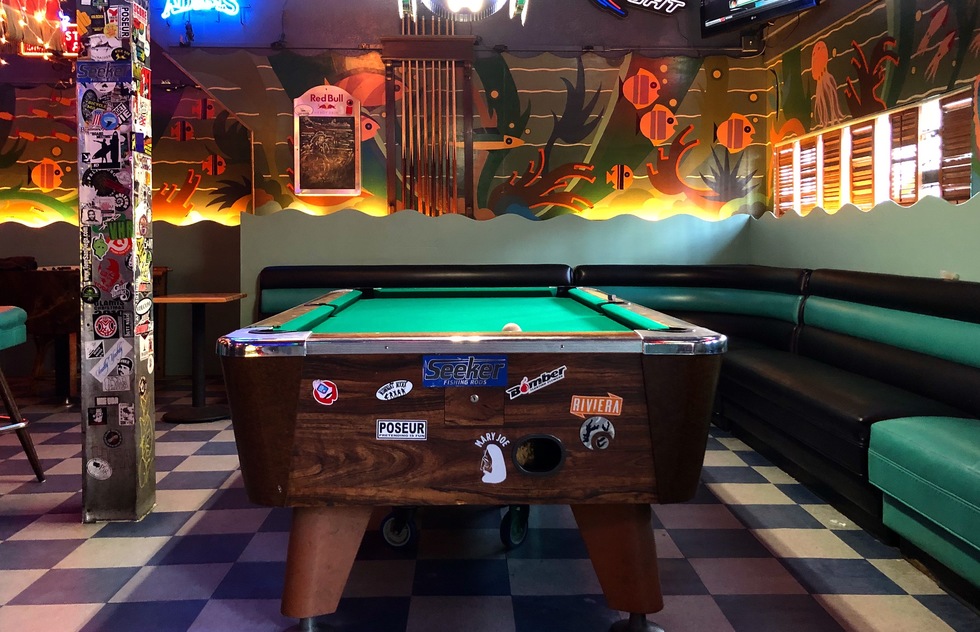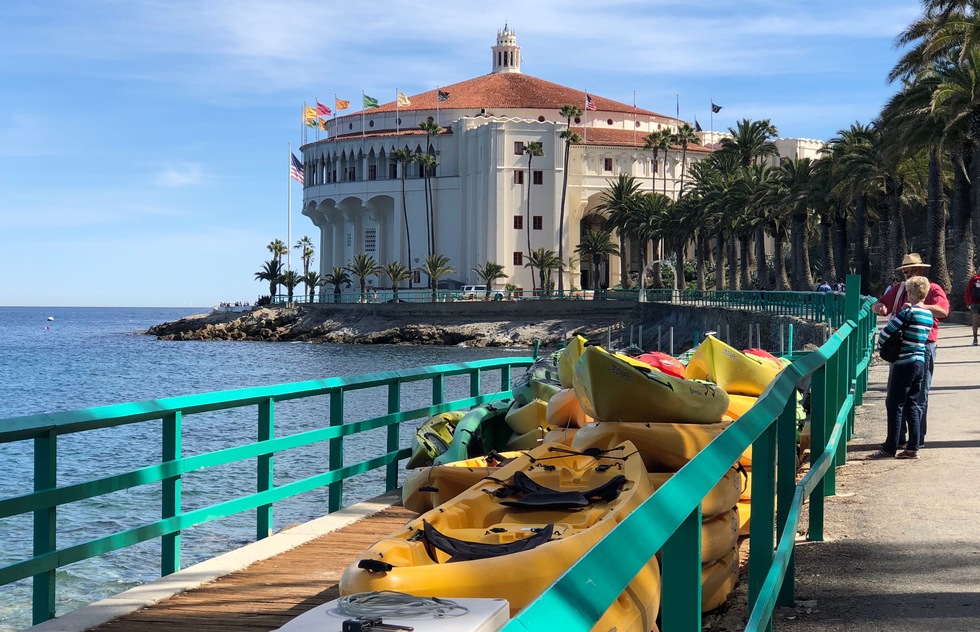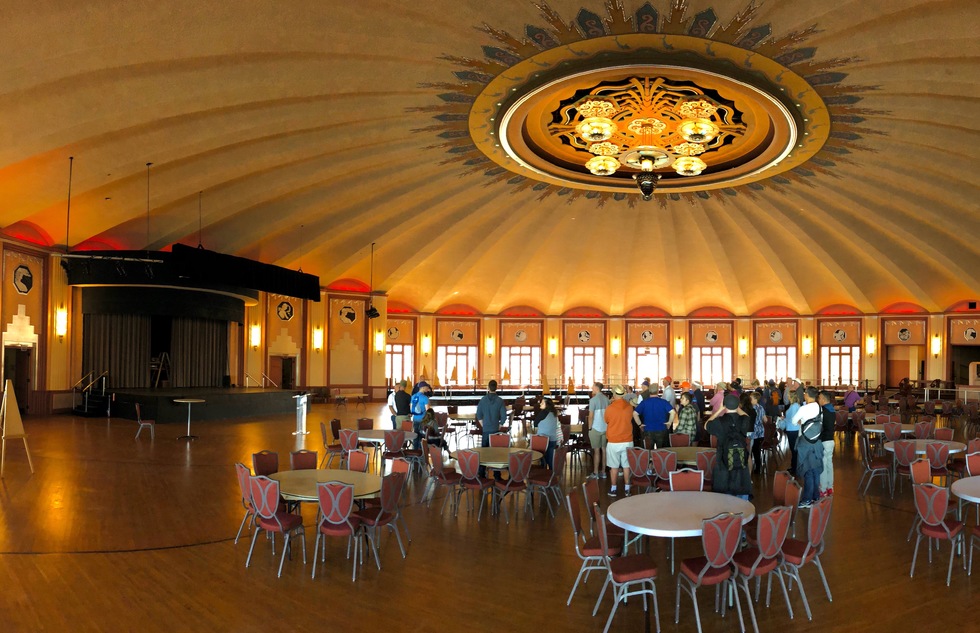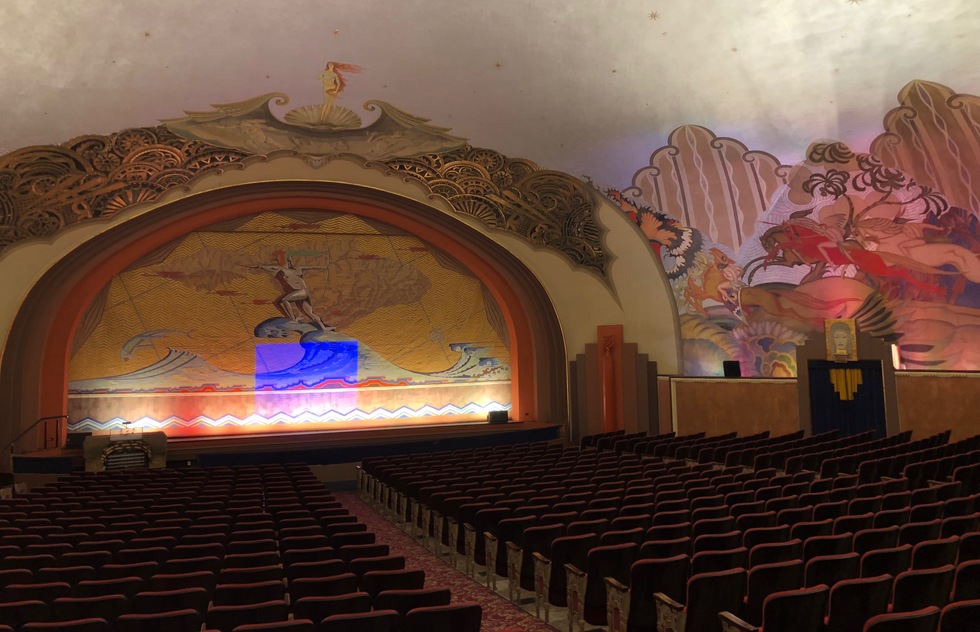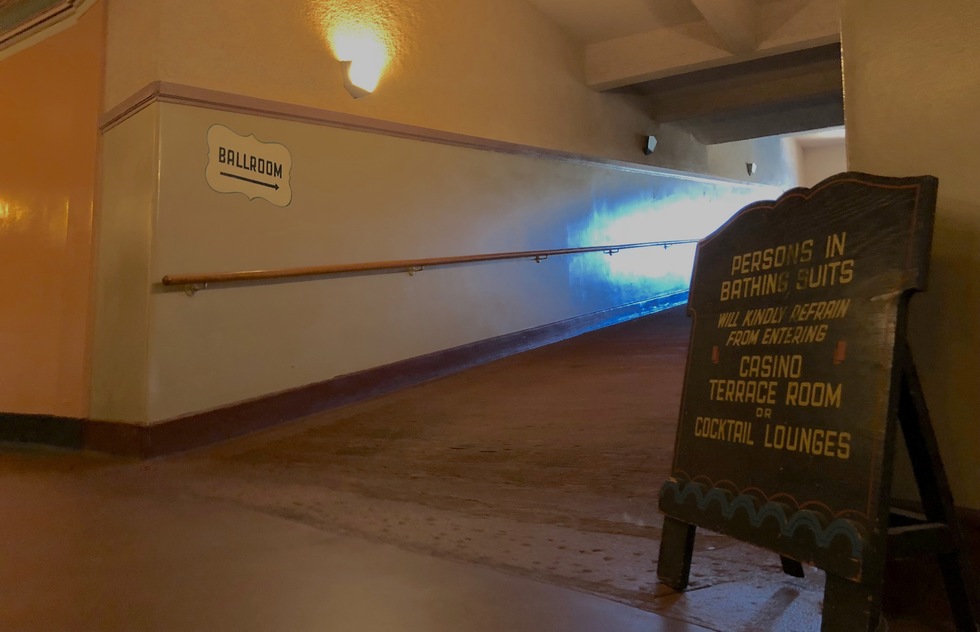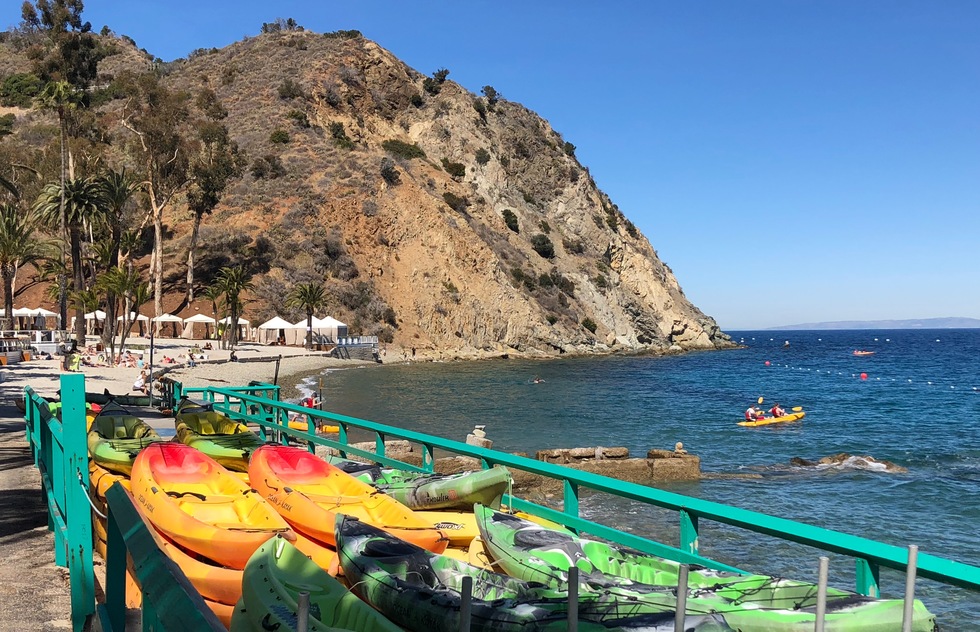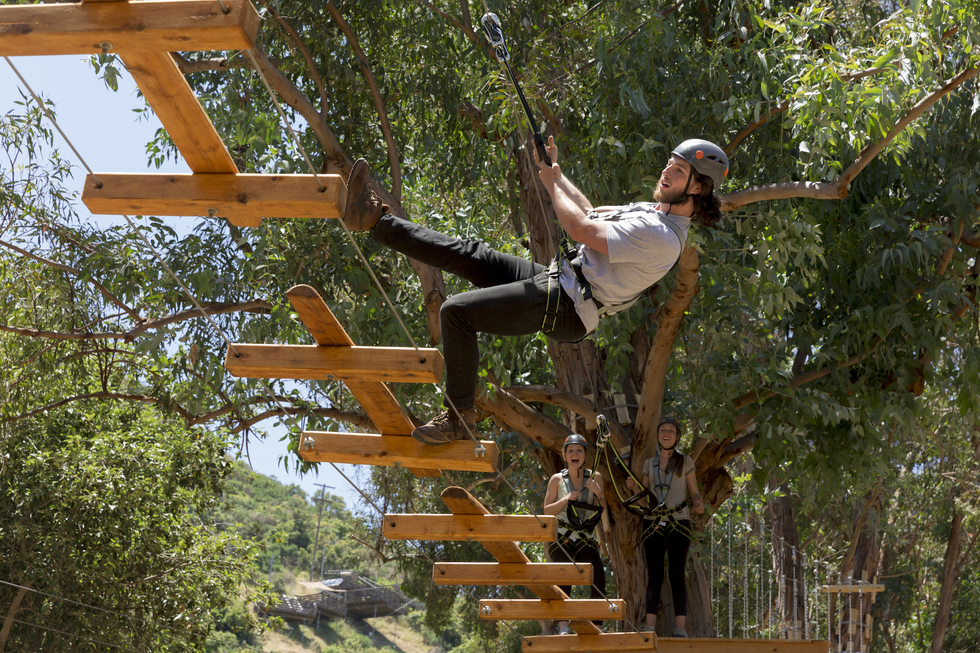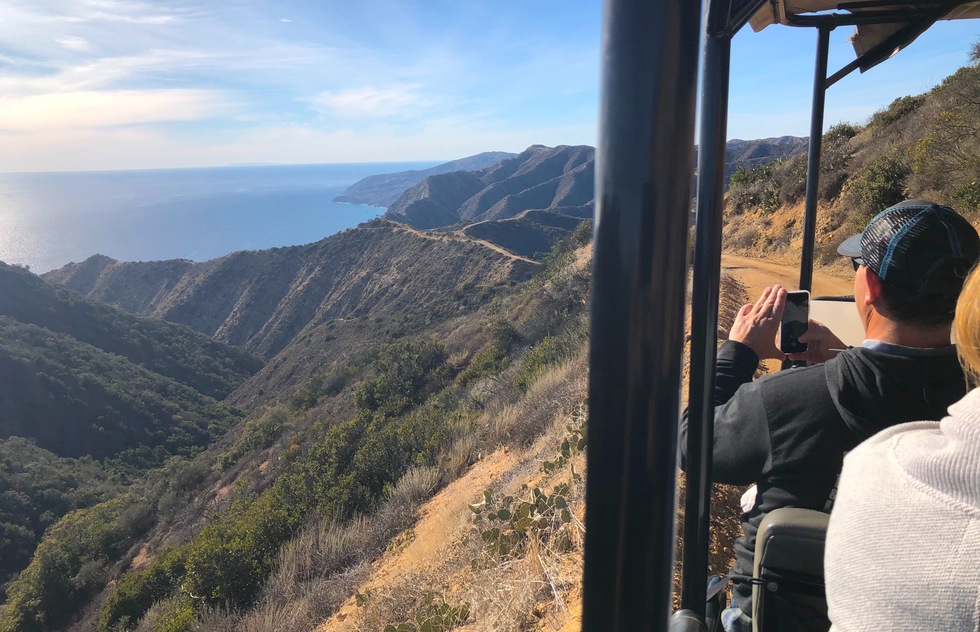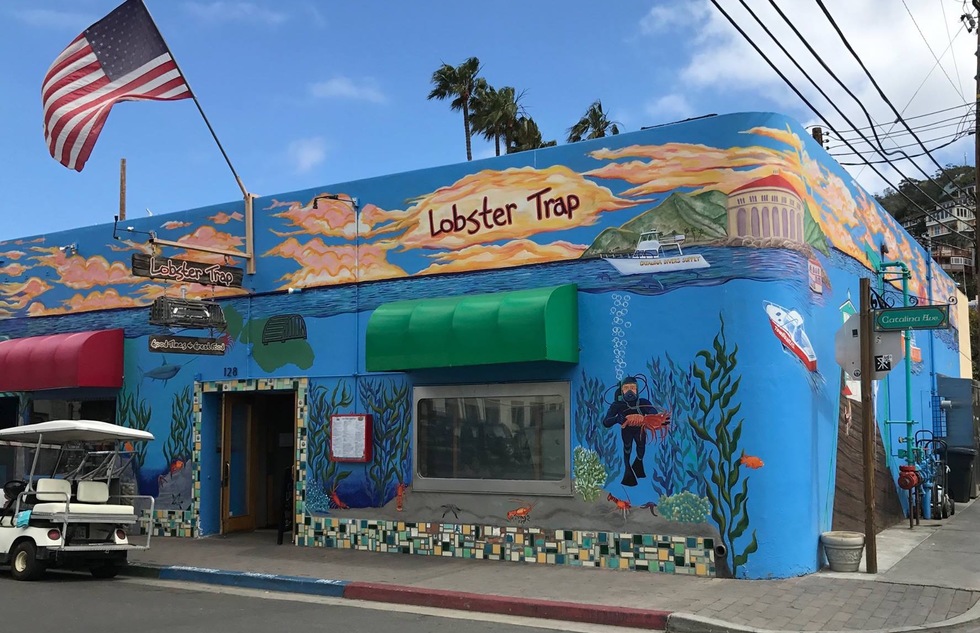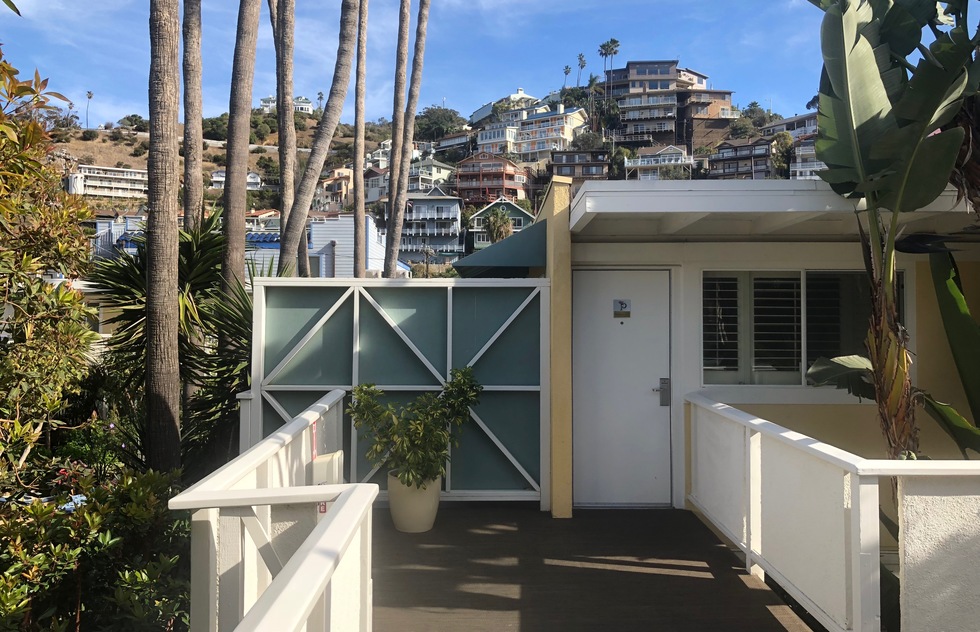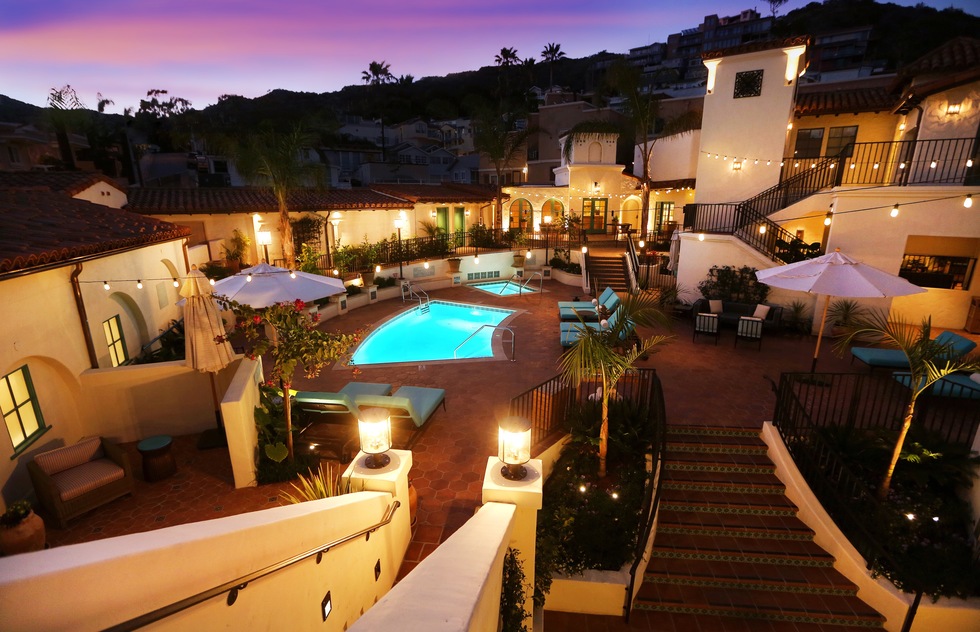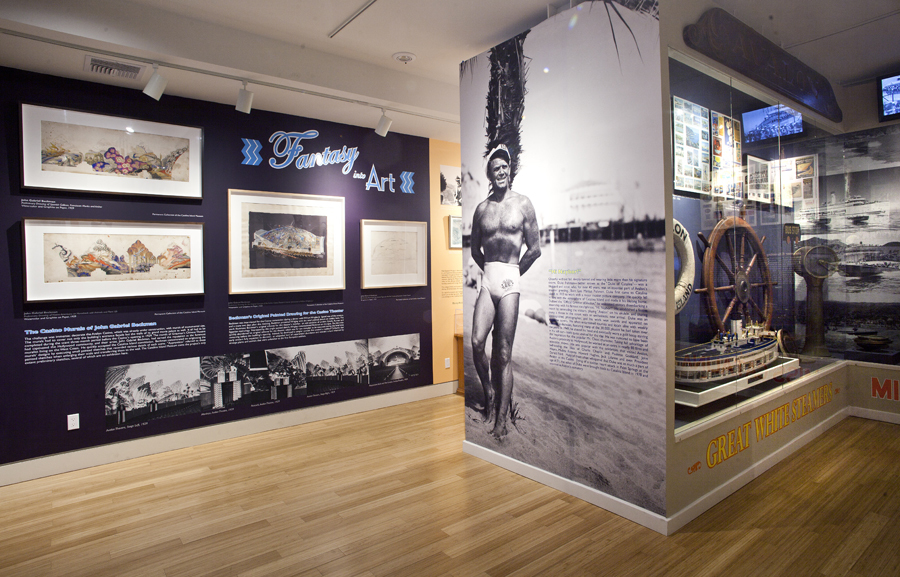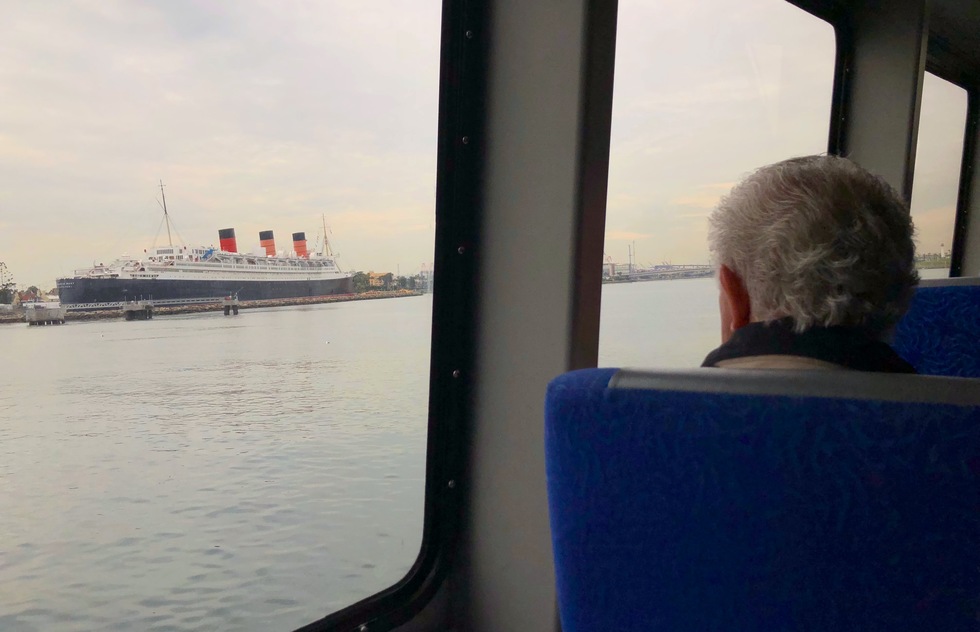Things to Do on Catalina Island, L.A.'s Island Getaway
By Jason CochranJust about everything about Catalina is incongruous. Found 22 miles into the Pacific Ocean southwest of Los Angeles, this rugged isle is a bastion of laid-back calm within sight (on a clear day) of the city's skyscrapers. An hour from the freeways and the Hollywood studios, sailboats bob in clear waters, dew trickles down cold beer bottles in waterfront bars, and hikers crest forested mountains to gaze at an endless expanse of ocean. The lack of development alone feels like a miracle.
But the island's originality doesn't stop there. Almost all of it was purchased in 1919 by chewing gum kingpin William Wrigley, Jr. to build a public vacation resort, and today, Catalina remains in the family's control. The main village, Avalon (pictured above), is a company town where the only business is leisure.
In the old days, it took two hours to reach Avalon by steamer—bands would perform en route, and local kids would greet arrivals by swimming to the boat and diving for tossed coins. Today, the trip takes barely a painless hour on even-keeled fast boats like this one from Catalina Express. There's no band anymore, but you can buy Bloody Marys and start swinging on your own. (This is the cheapest way to get here; you can also fly, but that costs more and the mountaintop runway is short and harrowing.) Catalina's only other settlement, Two Harbors, is 15 miles from Avalon and has only one restaurant and one bar, so it's favored more by private yachts. Nearly all tourists arrive in Avalon, where the permanent population is less than 4,000.
No cars here. Well, there are a few, but the island tightly controls how many—even if you live here, there's a 17-year waiting list. Instead, people stroll (the town is pretty much only a square mile) or they rent golf carts, which zip around the streets in stealthy silence. Right by the port, Old Ben Park commemorates a friendly sea lion who befriended the locals from the late 1800s to 1921 and even appeared in a 1914 "Fatty" Arbuckle comedy. (Yes, a tribute to a sea lion silent movie star. It's that kind of town.) Cupping the village are mountainsides lined with vacation homes you and I could never afford to own but which nevertheless provide a lovely backdrop that doesn't cost us a penny. Mr. Wrigley's own summer cottage, Mt. Ada, is the plushest five-star B&B in town, with views that practically command the Pacific Ocean to wave—and honeymoon-level luxury pricing to match.
From 1927 to 1937, Catalina was also known for using island clay to make artisanal pottery, which blended Art Deco, Moorish, and Mexican influences and was intended to generate employment and a distinct branding to attract visitors. Original pieces are now highly prized, but the island's masters have cleverly re-appropriated the style for modern features used in public décor. Distinctive self-sufficiency is a longstanding theme here. Although it's technically part of Los Angeles County, Catalina is its own universe, and locals mostly get along without much city influence. Rainwater is still a dominant water source, power is self-generated, and some residents only venture to the mainland a few times a year. Still, everything shipped to Catalina must be charged by the pound in freight, and medical services at the area hospital stop short of childbirth and surgery.
Catalina used to be home to the Tongva people, but after most of them moved to the mainland, the island was used as a Union post in the Civil War. Then a series of outsiders—German-born, Delaware-born, then Michigan-born—began turning the island into a pleasure ground. But it was Chicago-based Wrigley who took control of the Catalina Island Company and turned Avalon into what it is today. The Green Pleasure Pier, in the middle of town, was set down in that period. Avalon's local hardware store is frequently called upon to mix up this peculiar shade of green for enchanted visitors. The pier is still where you can grab seafood, a beer, fishing tackle, or catch a ride on the glass-bottom boat, the Moonstone, that glides over the vibrantly colored fish that thrive in the island's shallows.
The oldest bar in Avalon is the Marlin Club, which opened in 1946 and has barely shifted a stick of furniture since. What looks at first like a grizzled dive bar is actually a totally relaxed island drinking hole for slumming sophisticates. The charm borders on kitsch: The Art Deco underwater murals are a local treasure of iconography, the bar is in the shape of the prow of a boat, and when it's very quiet (or the clientele is very tipsy), a popular pastime is gently rolling the billiard cue ball around the lip of the bar without letting it drop. (I won on my second try. Not bragging.)
The most famous building on Catalina is the Casino—which, following the original meaning of the word, isn't a gambling hall but an entertainment nexus. It's got a massive dance hall and a classic cinema, painted curtain and all. Back in the 1920s, Wrigley began pouring cash into his island to give it some some heavyweight heft. He bought the Chicago Cubs, for one, and installed them here for their spring training beginning in 1921. And to round out his island's reputation as a star-studded getaway, he built this Casino in 1929 for the equivalent of nearly $30 million today.
Wrigley's lavish investment worked. For generations, the casino's ballroom was a staple on the Big Band circuit—Kay Kyser, Benny Goodman, and Bob Crosby (Bing's brother) all broadcast coast-to-coast from here—and holidaymakers would stream in from the mainland to dance the night away. That 1929 dance floor is still intact. You can walk upon it during a Discover the Casino walking tour, a 45-minute jaunt that races you through the building's biggest spaces: ballroom, cinema, and balcony overlooking Avalon.
Directly underneath the ballroom is the see-it-to-believe-it Avalon Theatre, the very first auditorium to be designed with sound pictures in mind (this was 1929, after all). The acoustics were so ideal that the architects of New York's Radio City Music Hall came to the island to crib a few notes. The spectacular 360-degree Art Deco murals depicting California history are by John Gabriel Beckman, whom Wrigley snagged for the commission after his impressive work on Sid Grauman's Chinese Theatre in Hollywood (1927). In Avalon, Beckman designed a stage curtain, "Flight of Fancy Westward," that symbolized Wrigley's journey from smoky Chicago to surfy California. Every night at 7:30, anyone can still watch a first-run movie screened here (Tuesday night is half price). The concession stand sells stuffed foxes in tribute to the Catalina Island fox, an only-on-Catalina species that burrows everywhere in the surrounding mountains.
Instead of stairs, which are tiring and rough on musical instruments, Wrigley decided to copy Wrigley Field in Chicago and build ramps to the top of his 12-story Casino. It's a little bit of Chicago in the Pacific Ocean. In addition to the quicker highlights tour, there's a 90-minute Behind the Scenes Casino Tour that takes visitors backstage and into the private box where the Wrigleys used to watch shows. The Cubbies, though, are long gone: After a freak snowstorm in 1949, they bailed on Avalon for Arizona as their springtime base. Their loss—it hasn't snowed here since. Then again, the Cubs spent the 20th century blaming lots of things for their failures—even a goat-related curse.
The grande dame of Catalina hotels was the St. Catherine—named after the island's full name, Santa Catalina. Starting with the hotel's establishment in 1918, it was the holiday home base for a who's who of stars. Humphrey Bogart, Lana Turner, Marlene Dietrich, and John Wayne were all regulars. But World War II ended that. The entire island became a military base, and even after hostilities ended, Catalina never quite got back onto the boil as a celebrity hotspot, especially not with Las Vegas and Palm Springs on the rise. By 1966, the old hotel was a mess and had to be torn town. In its place, the governing body of the island, the Catalina Island Company, recently built the Descanso Beach Club, which isn't quite as exclusive as it sounds. With their first drink at the waterfront bar, guests are charged a quick $2 to become "members" so they can get around California's law against drinking alcohol on a public beach. They can also kayak.
High over the site of the old St. Catherine hotel, there are two new attractions suitable for a new generation that prefers a little action: a zip line (five runs down the mountaintop, starting 600 feet above the ground) and five Aerial Adventure ropes obstacle courses of varying difficulty, from "pretty much a sidewalk in the sky" to "leap three feet sideways onto this coffee can-sized block swinging wildly from a rope."
Since you can't rent a car, the only way to explore the island (besides rough hiking or boating around it) is to book a tour on one of the heavy overland vehicles that tackle the sometimes harrowing dirt roads. The narrated, two-hour adventures are the most popular ones. They jolt and jostle around the tip of Catalina hundreds of feet above Avalon, skirting roads that manage to cling to the brushy mountainside only because early settlers imported Australian eucalyptus trees, which have deep root systems capable of holding the earth against the hills. On the west side of the island (pictured above), the wide Pacific Ocean opens up—there's nothing out that way until Japan. Tour drivers will usually swing you by the island's roaming herd of buffalo—they were brought here for the filming of Zane Grey's western The Vanishing American (1924) and were never taken back home. Many palm trees, too, aren't native, having been brought for 1935's Mutiny on the Bounty with Clark Gable.
Food prices aren't cheap on Catalina—everything has to be brought in—so you'll usually pay in the upper teens to the low $20s for a main dish at dinner. The trade-off is the setting: the Bluewater Grill is dockside, Maggie's Blue Rose is fresh Mexican with eclectic contemporary art, and Luau Larry's is a kitschy waterfront tiki dive with a Hawaiian menu and its own Wiki Wacker signature rum cocktail. There are other places to try, but one that the locals seem to approve of the most (you'll actually find them eating here) is the long-running Lobster Trap, located off the waterfront on Catalina Avenue. It merges top-notch seasonal seafood with shots, drinks, and the kind of super-casual atmosphere that inspires people to retire to islands like this.
In November of 1981, movie star Natalie Wood spent a weekend boating around Catalina with fellow actors Robert Wagner (her husband) and Christopher Walken. The trio was observed fighting, and soon, Wood demanded the captain of their boat bring her to shore so she could get away from her companions. She spent her last night on earth here, at the Pavilion Hotel. In the morning, Wagner and Walken talked her back onto the boat, which she fell off hours later and drowned under circumstances that remain mysterious. The ground-floor room where Wood stayed has since been renovated past recognition, but today the 72-room Pavilion, a motel-style inn built in the late 1950s, remains one of Avalon's most popular places to overnight. The lodge, right on the port, sets a price point that's well past its humble origins (often, the mid-$200s), but it gets away with it by having excellent bedding, careful service (free afternoon wine mixer, the dying tradition of an evening bed turndown), and a lush courtyard for fire pits and and outdoor breakfast. Natalie should have stuck around.
William Wrigley's son did what he could to keep Catalina popular, building in 1933 a multilevel compound he called the "El Encanto" Mexican village. It was like an early Epcot pavilion—roaming Mariachi musicians, dancing girls, puppeteers, and craftsmen. That wore out, though, and in 2014, the Wrigley family, through the island's governing body, turned the complex into a unique spa, the partly open-air Island Spa Catalina. The relaxation lounge is a patio overlooking the Tuna Club, a private men's fishing club (founded in 1898) on the National Register of Historic Places. Beyond that, boats can be seen bobbing in the Pacific bay with mainland California in the far distance.
It's sort of astounding how many of American pop culture's biggest players have circled around Catalina for more than a century. Bogie and Bacall nuzzled on their yacht in the coves. Radio announcer Ronald Reagan accompanied the Cubs during spring training in 1936 and 1937. In the 1930s, Charlie Chaplin and Paulette Goddard had a controversial affair on his motor cruiser Panacea that essentially killed her chance of being cast as Scarlett O'Hara in Gone with the Wind. In 1943, Errol Flynn took liberties with a girl on a yacht here that landed him in court on rape charges (he was acquitted after clever lawyers packed the jury with women who thought he was sexy). And Marilyn Monroe lived here as Norma Jeane Dougherty during World War II with her first husband, whom she married at age 16.
It's all retold with incisive commentary at the Catalina Island Museum, one of the smarter local museums I've been to. This handsome and airy new facility opened in 2016—one more deep investment that's linking the old island with the future. There's always a permanent exhibition about the island (including artifacts from the original natives and original sketches for the Art Deco Casino murals) plus a changing big-ticket show of wider, off-island interest. In the past, these have included a Dale Chihuly retrospective and shows on pinup Bettie Page and the legacy of the movie Jaws.
Bonus: If you catch the Catalina Express to and from Avalon out of Long Beach, you'll catch sight of the famous Queen Mary, which for decades was the fastest and most adored ocean liner during the end of the Golden Age of transatlantic travel. She's permanently docked in the same port, so you can easily add an exploration of that vessel to a Catalina jaunt.
For our complete guide to Santa Catalina Island, including recommendations and contact details for hotels, restaurants, and things to do, click here.





